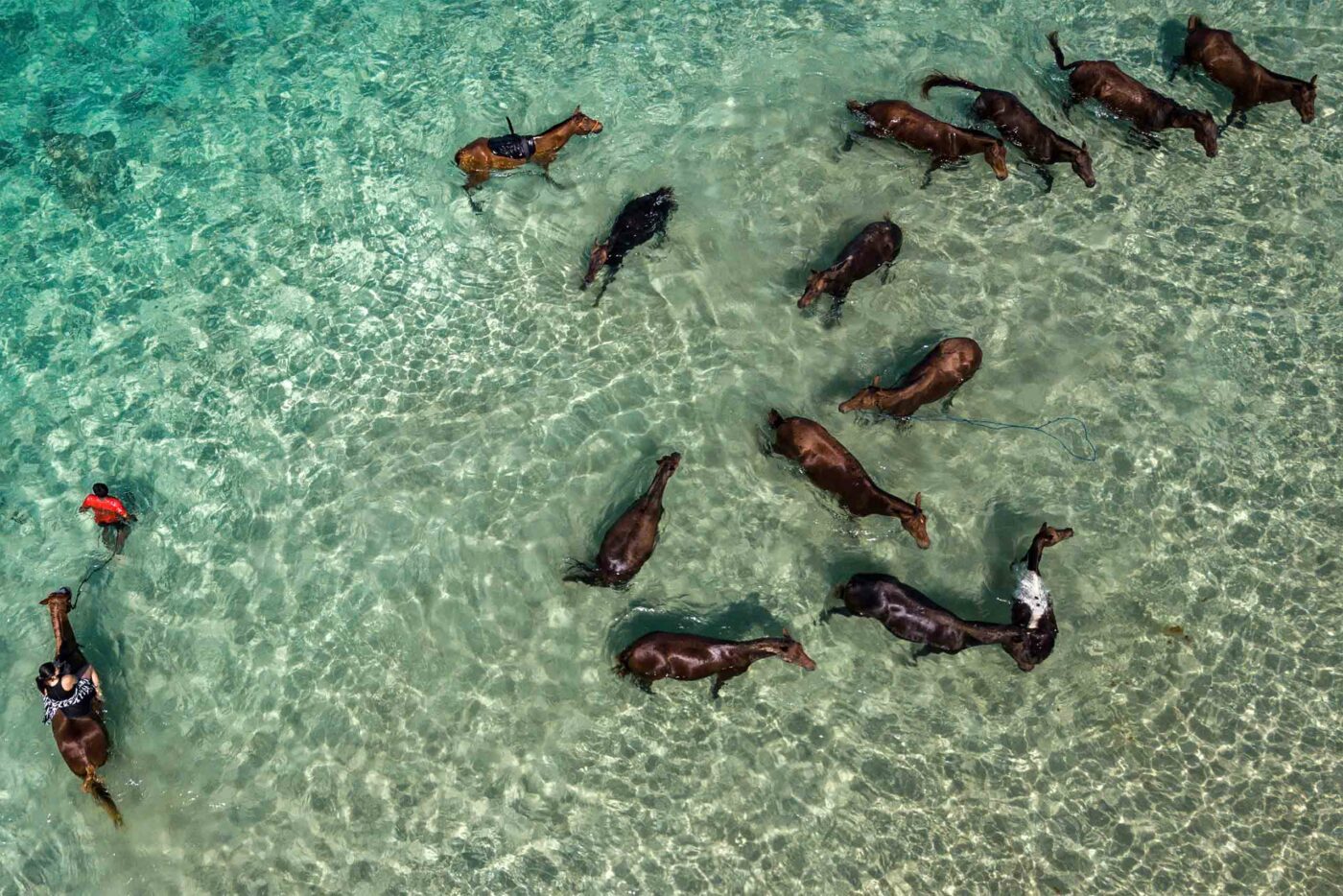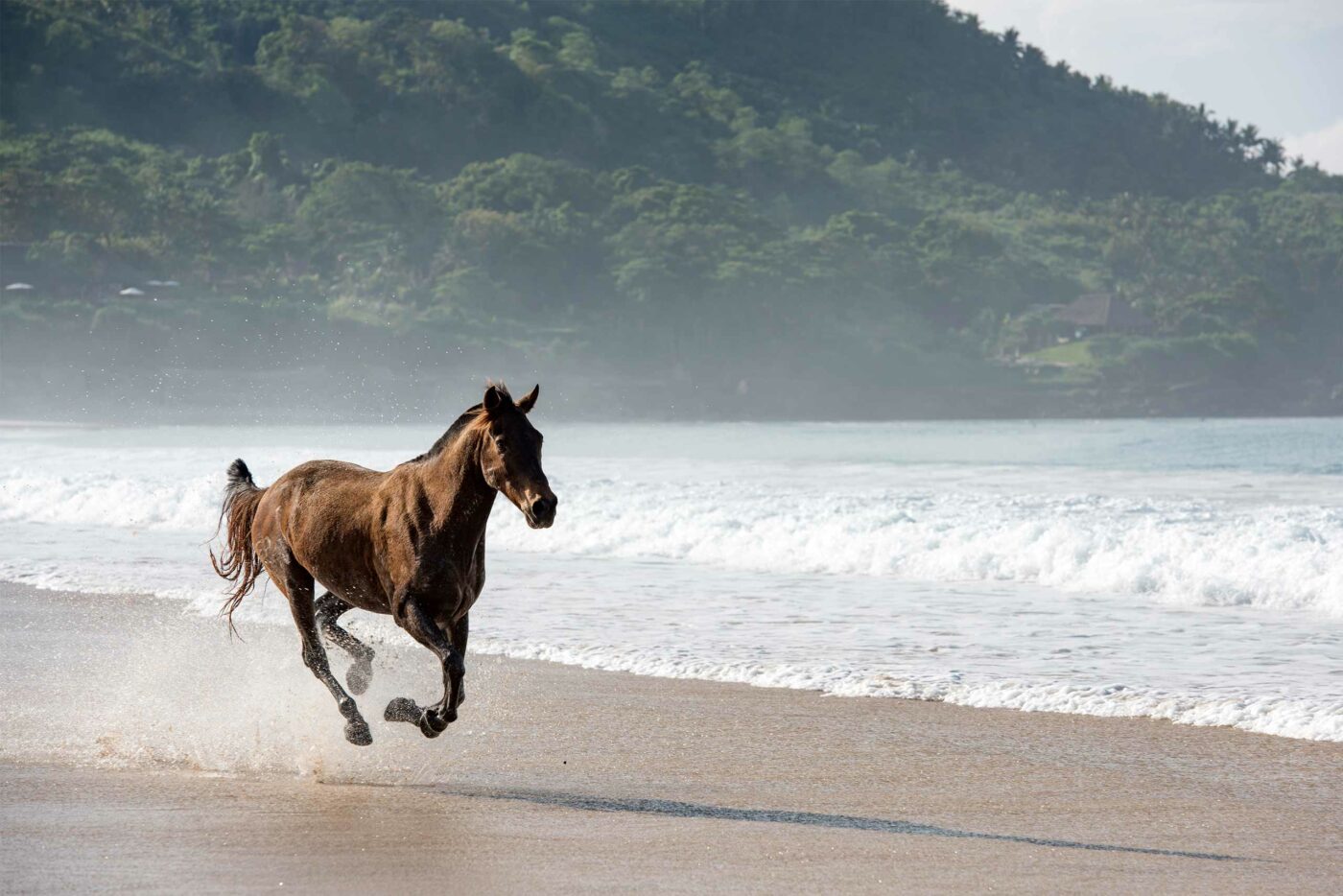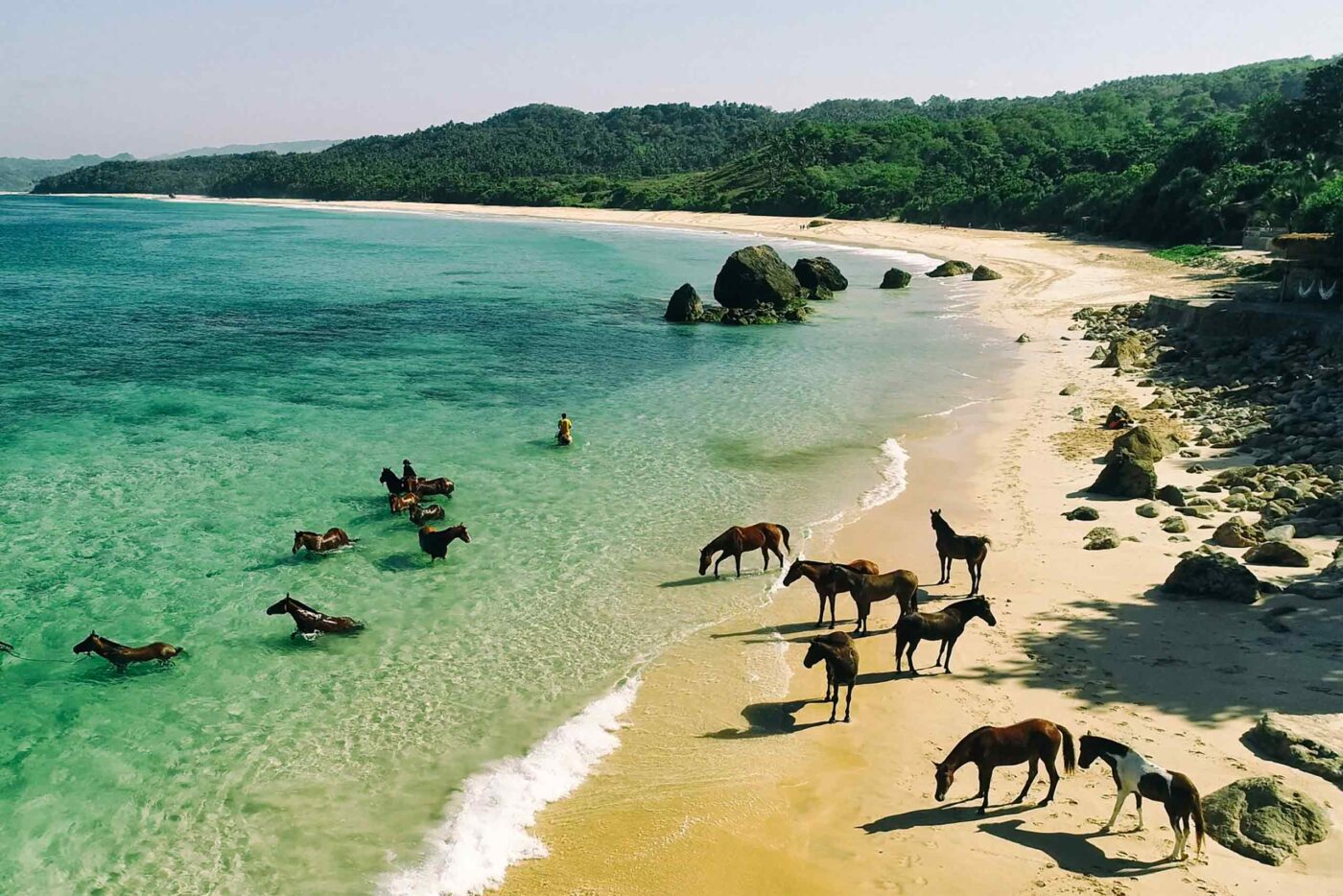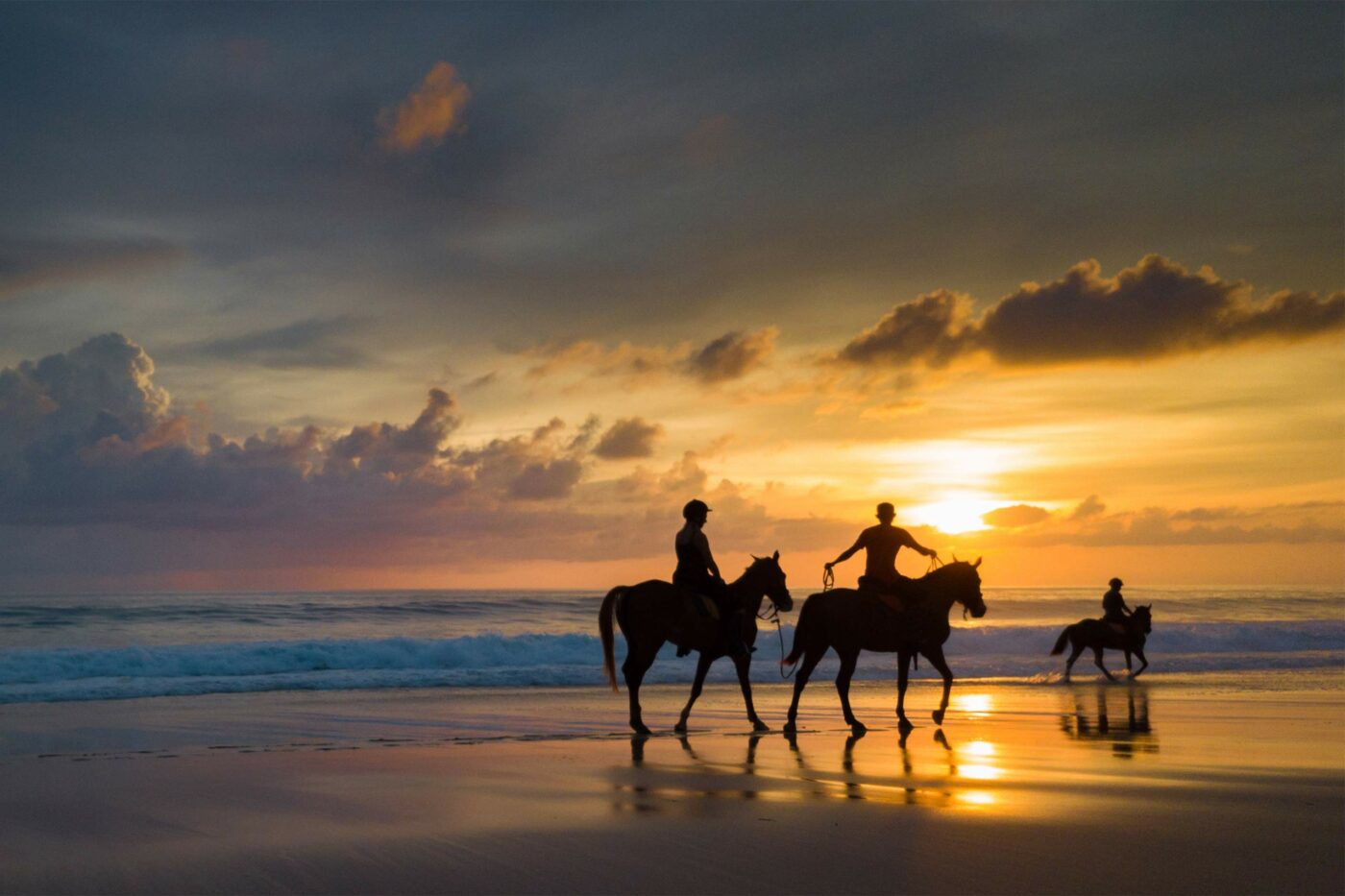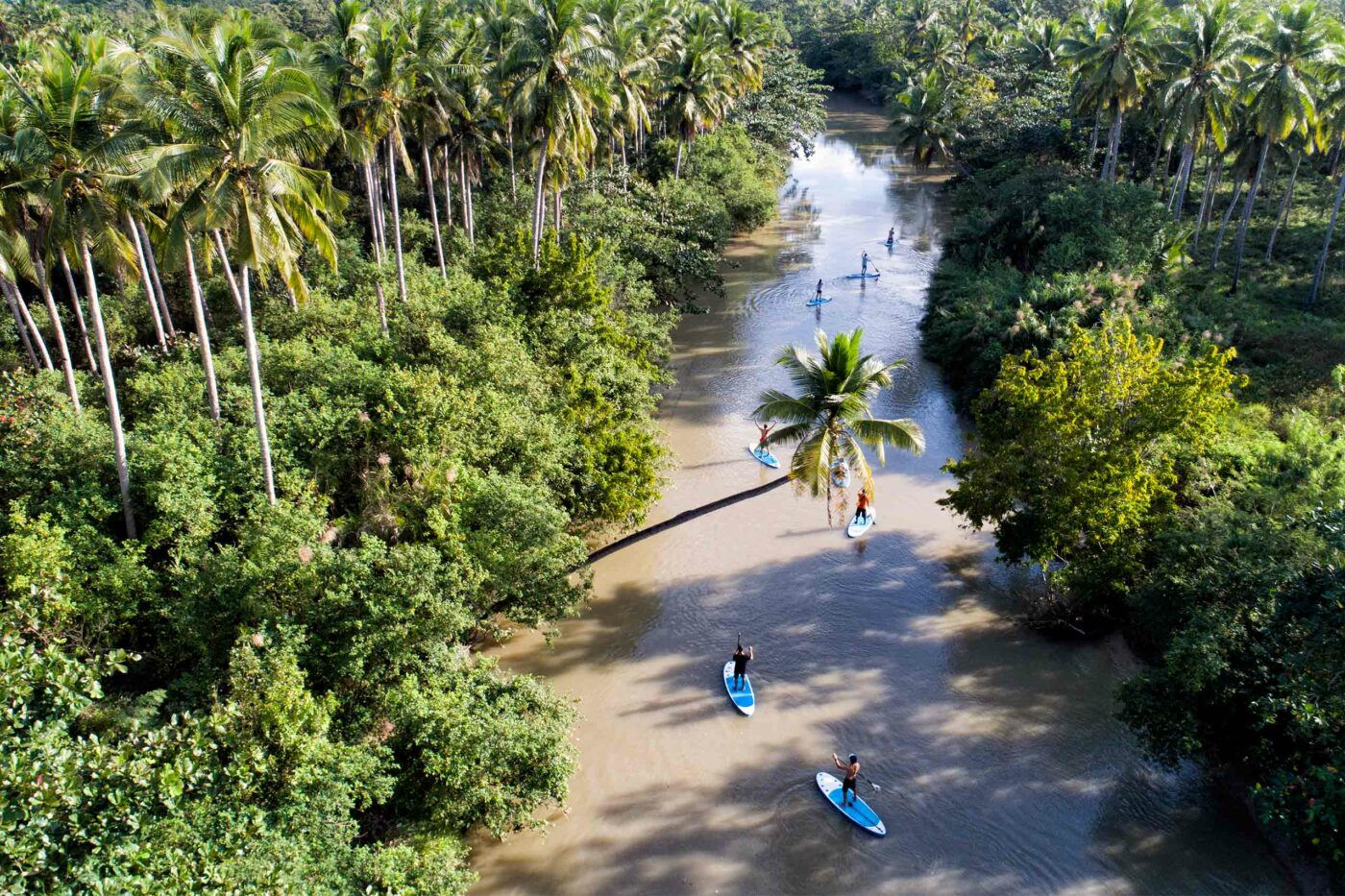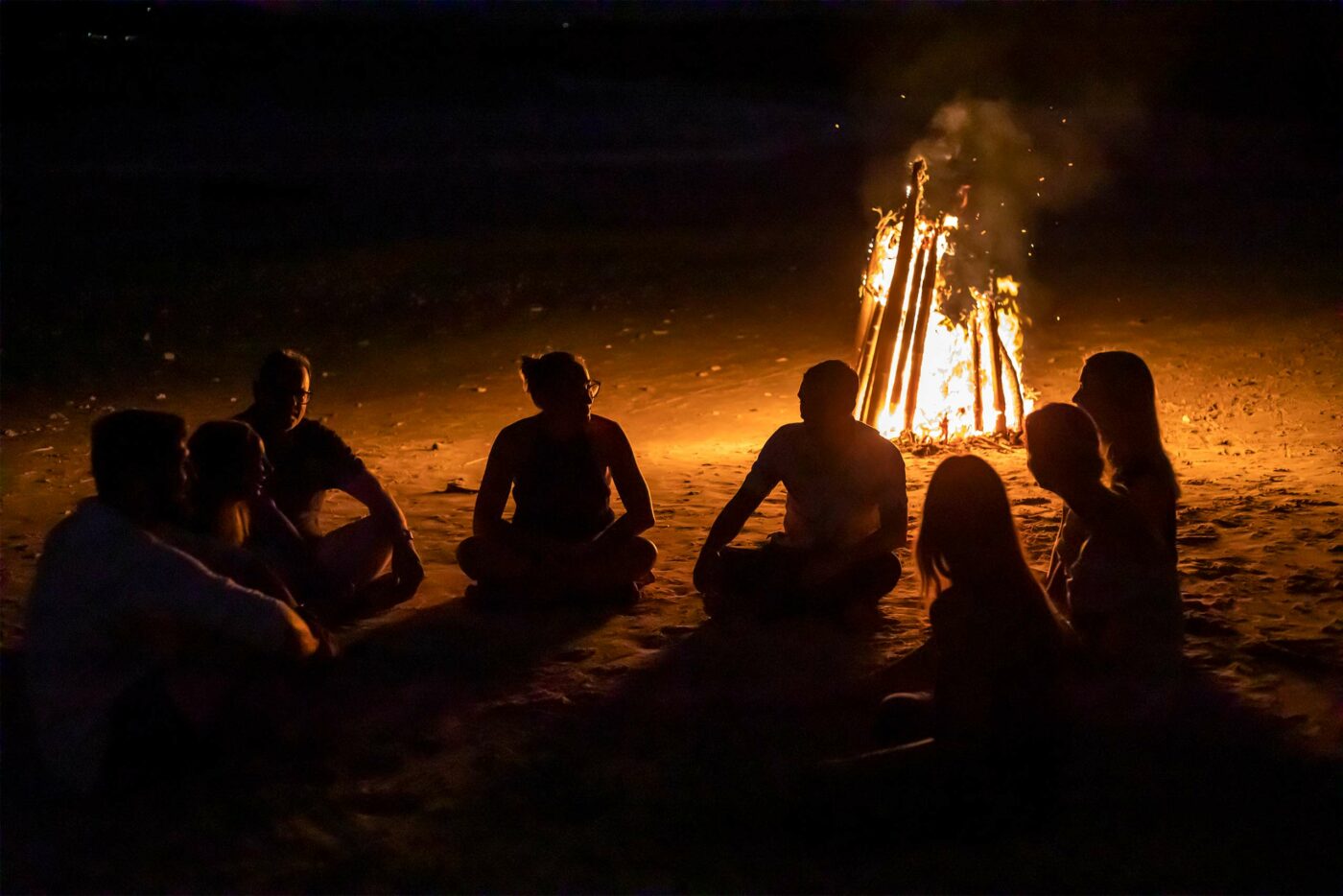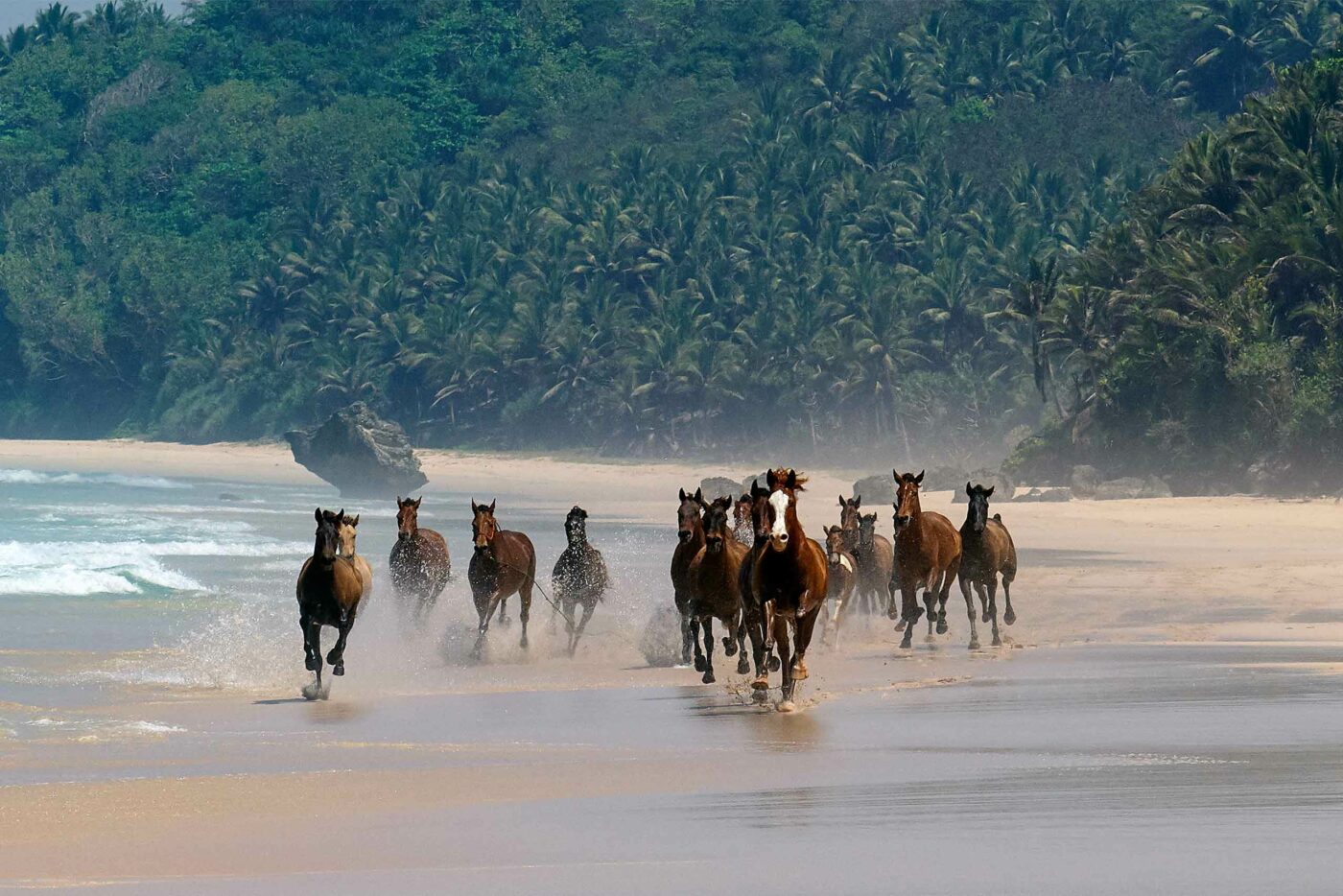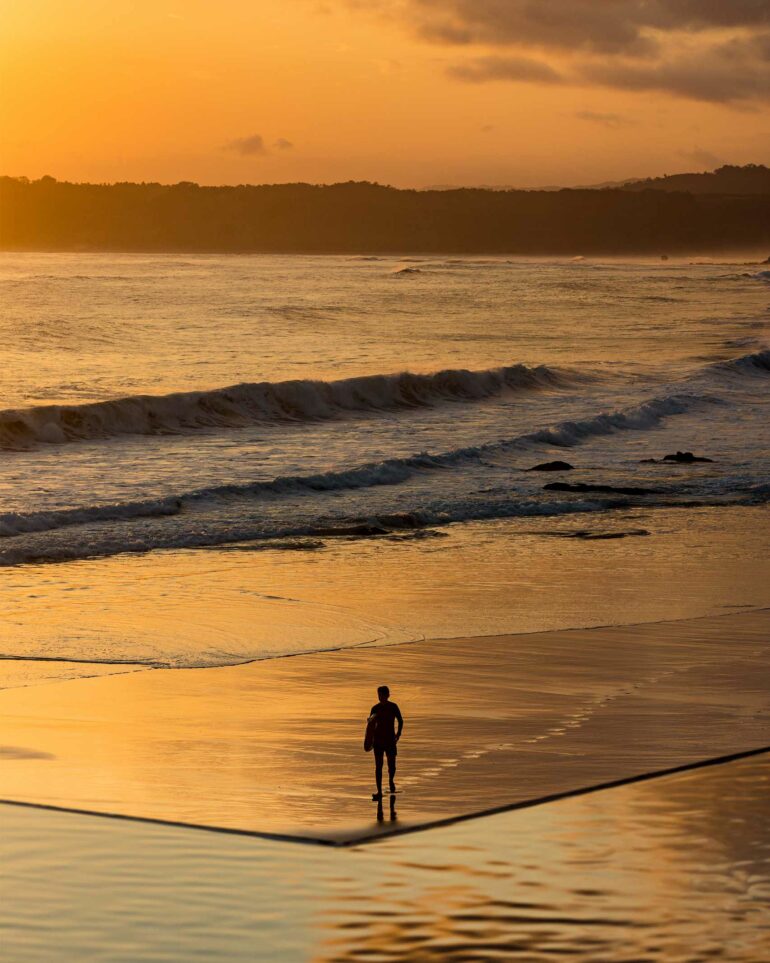On the exquisite Indonesian island of Sumba, the world-leading luxury resort Nihi is offering a new equine therapy retreat that aims to ease its guests’ inner troubles by building bonds of trust with horses. OutThere saddles up.
Asmara doesn’t trust me. Asmara, I believe, doesn’t trust anyone. But as sapphire waves, foaming with white manes, wash over the sun-bleached tresses of her neck, she’s clearly spooked, and she looks to me to hold back the tide. Little does she know that I’m preoccupied with holding an ocean inside.
I’m swimming alongside Asmara — a bay-coloured horse with worried brown eyes, blonde ombré forelocks and a stand-offish disposition. On the shoreline beside me, in an untouched part of the remote Indonesian island of Sumba, sits the luxurious Nihi resort. It tumbles down a verdant hillside into the ocean, offering a secluded escape. The lengths one has to travel to get here – an hour-long morning flight from Bali, then a scenic 90-minute drive in the back of a safari vehicle – only enhance the sensation of being an emotional castaway.
There are 27 accommodations at Nihi and they are all unique. Most are spacious one- to four-bedroom villas, topped by a witch-hat-shaped, grass-thatched roof, in traditional Sumba style. They all have private pools, a minibar stocked with cocoa treats from the resort’s on-site chocolate factory, and a WhatsApp butler on call. None have TVs. Nihi Sumba overlooks one of the planet’s most legendary surfing breaks, so the focal point is always the sea, and every room offers views of it.
In the waters around me now, the rest of our equine-assisted psychotherapy group ride their steeds into the sea – the horses grateful for the respite from the midday sun, their riders posing on horseback for photos in swimsuits and floppy hats, or whooping exultation at the end of what has been a troubled week in paradise.
I look longingly over at Blaze, named after the white streak running from forehead to nose. He’s a horse with whom I formed a connection on day one. He emits a gentle warmth and carries his rider with diligent care. I’m a little jealous.

This story first appeared in The California Cool Issue, available in print and digital.
Subscribe today or purchase a back copy via our online shop.
Asmara, in contrast, cannot be ridden and she’s a pretty unwilling participant in equine therapy – and in swimming, for that matter. Typically grouchy, she tugs on her lead rope, letting me know she’d rather be in the shade of the stables.
I chose Asmara as my therapy horse because she has been branded many times. Burning irons have marked her body all over. She’s even had a searing stamp on her face. It makes me think she has been treated badly in her life, passed around, known little kindness and much upheaval.
I’m aware of how this sounds. Professor Andreas Liefooghe – founder of the UK’s leading horse therapy centre, Operation Centaur, in Richmond Park, Surrey, as well as creator of Nihi’s Retreat & Conquer equine therapy programme – would say I’m projecting on to Asmara, using her as an analogue for my own experiences.
Maybe he has a point. But can’t I just feel empathy for people and animals without it meaning something deeper? According to Andreas, not really.
“When you empathise with a person, or cry at something happening to someone in a film, you’re not crying for them, you’re crying for you,” he says.
Whether discussing my own issues or listening to the stories of others, I find myself holding back tears several times during our group therapy sessions, sitting in a circle on the wooden deck of one of the most luxurious resorts in the world.
The sessions at Nihi take place at Mamole Tree House, which consists of three separate two-storey lodges connected by a large communal area built around the trunk of a tree. Its hardwood decking, with views down to the ocean, is heaven-sent for a group to sit on and focus. It’s also a strange setting to feel so sad, but a gratifyingly far cry from a sterile therapist’s office.
We’re all here for our own reasons. Some members of our group are eager to learn how horses can help us handle loss, addiction, grief and guilt. Others think that horse therapy is nothing but woo-woo mysticism, but they are, nonetheless, overcome with curiosity. Some have imbued the horses with almost magical qualities, believing them to be gifted with an understanding of the human condition: spiritual saviours. Some of us believe such lifelines are already out of reach, and we must stopper the sea or drown in the flood.
But none of that matters for equine therapy to achieve its goals, believes Andreas, who sees horses simply as the tools of his trade. Horses and humans have a shared history dating back more than 6,000 years, and Andreas uses them in psychotherapy for the same reasons we have always used horses – to get us places faster.
“Introducing horses into therapy sessions allows clients to experience a non-threatening emotional connection to another being without the need for language. By observing how we interact with the horses, we can also learn about people”
A lifelong horseman, Andreas is a psychotherapist and a professor of psychology with more than 20 years of experience. He has more letters after his name than there are within it. No, really.
In 2005 he founded Operation Centaur, bringing horses into unusual settings, from London’s royal parks to school playgrounds and prison yards, using equine-assisted therapy to help with addiction issues, neurodiversity in the workplace, anti-bullying interventions and the rehabilitation of criminal offenders. Along with a small but growing community of psychotherapists, spearheaded by the Equine Assisted Growth and Learning Association (Eagala), Liefooghe believes working with horses can help us address issues such as bereavement, co-dependency and depression.
“The connections that humans find with horses can become a catalyst for deeper self-knowledge,” he says. “By reading their reactions to us, we can get a profound insight into ourselves. Talk is the currency of therapy, but if a person can’t talk, won’t talk or is too ashamed or traumatised to talk, then regular therapy can’t work. Language is the most sophisticated cultural artefact we have, but it can be tricky to decode. Stripping language out helps us get back to a natural way of communicating. Horses don’t talk, but they are incredible communicators.”
Liefooghe explains to me that introducing horses into therapy sessions allows his clients to experience a non-threatening emotional connection to another being without the need for language. By observing how we interact with the horses, Andreas believes he can also learn about us as people.
“As prey animals, horses rely on their instincts to stay safe,” he continues. “They make accurate decisions because their survival depends on reading predators correctly. Horses are mirrors and they don’t lie. Watching how horses respond to the signals individuals and groups give them offers us an opportunity to learn in the moment like no other.”
It’s not important whether you believe, as Liefooghe does, that horses can pick up on human emotions. The way in which we each engage with and anthropomorphise the horses helps our therapists understand how we think and feel much more quickly than by simply talking to us. The horses speed up the process of understanding.
With Retreat & Conquer, Andreas is inviting the public to embark on both literal and psychological journeys of self-discovery with a range of equine-assisted therapy escapes to exclusive global destinations. From Sumba to Limpopo, Mustique to Abu Dhabi, each destination has a strong link to the history of the human-horse relationship.
“We race past tourists and fellow group members plodding along on horseback in the opposite direction, and I realise that running beside my horse offers a much more intense feeling of togetherness than being carried ever could”
Sumba’s diminutive Sandalwood ponies – named after the trees that once forested the island – are integral to the place’s identity. Introduced from Java in the 14th century, they’re raced each year during the island’s Pasola Festival by spear-wielding riders in traditional garb. It’s a spectacle often recreated for guests at Nihi. The resort also has its own herd of 22 horses, offering any guest the chance to ride on the sand and in the surf, or simply watch as they gallop down the beach together.
I finally give in to Asmara. I’m not comfortable with controlling others, human or otherwise and – despite feeling envious of my companions, riding and swimming with their steeds – I accept that Asmara does not want to swim nor be ridden.
One of the many things I’ve learnt from this therapy retreat is that we can do little to change the people around us, or some of the situations we find ourselves in. We can, however, choose how we will react to them. As Andreas told me, “You can’t work on someone else in therapy. You can only work on yourself”.
I lead Asmara out of the sea and onto the beach. I don’t necessarily believe a horse can comprehend human intentions, nor that she understands that I am capitulating in respect for her wishes, but I do get a sense of gratitude from Asmara. And then, in unison, we start to run.
Pumping our legs, we stampede along the shoreline together, exuberantly kicking up sand behind us as we speed along the beach. We race past tourists and fellow group members plodding along on horseback in the opposite direction, and I realise that running beside my horse offers a much more intense feeling of togetherness than being carried ever could.
It’s a moment of pure joy. Perhaps we could never really understand each other – although, with her hooves thundering into the soft sand beside my bare feet, and her lead rope in my hand, we could surely hurt one another. But by respecting each other, we can run together.
Of course, I’m likely projecting my own emotions onto Asmara. Perhaps Asmara trusts freely, maybe she happily carries the weight of others on her back, and chomps not at the bit that seeks to control her. I can never truly know.
I can’t control the world around me, but I can control the one within. I can choose how I react to what troubles me. I can transform an ocean into an aquarium, make a puddle of the Pacific.
As we slow to a stop at the far end of the beach, alone, together, our toes and hooves in the rolling surf, we can – at least for a while – still the churning seas inside.
www.nihi.com | www.retreatandconquer.com
Photography by Tânia Araújo, Read McKendree, Georg Schorschal, Jason Childs, Neil Dankoff, Ken Sugijanto and courtesy of NIHI and Retreat & Conquer





